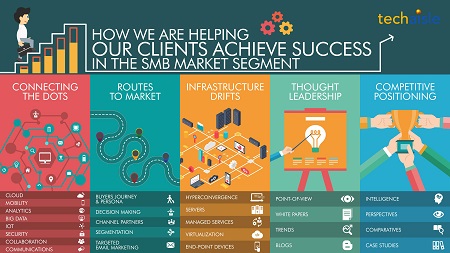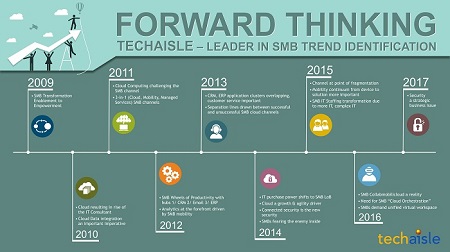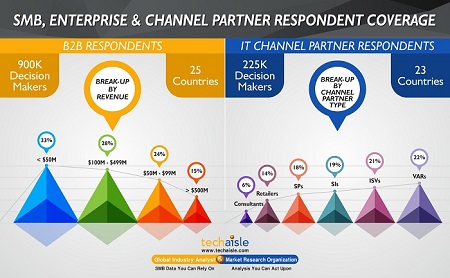They are here. Techaisle's annual SMB and Midmarket Top 10 IT Priorities, IT Challenges and Business Issues. This is the 5th year of Techaisle tracking at a WW level and is much sought after by IT vendors, channels and media. For 2017, Techaisle investigated 15 different technology areas, each with several sub-technology categories, 20 different IT challenges and 20 different business issues.
Click on the infographic images below to view and download your copy
When compared with 2016 the list for 2017 SMB and Midmarket Top 10 IT Priorities, IT Challenges and Business Issues reveals major changes – digitalization has become an IT priority and supporting digital marketing/workplace an IT challenge, improving workforce productivity as a business issue has catapulted to the top, enabling mobile workforce is among the top 3 IT challenges and Collaboration, Cloud, Mobility and Security are the IT priorities. Cloud orchestration has also appeared for the first time in the list of IT challenges as IT is finding it necessary to orchestrate across the entire enterprise to deliver business infrastructure via the cloud.














